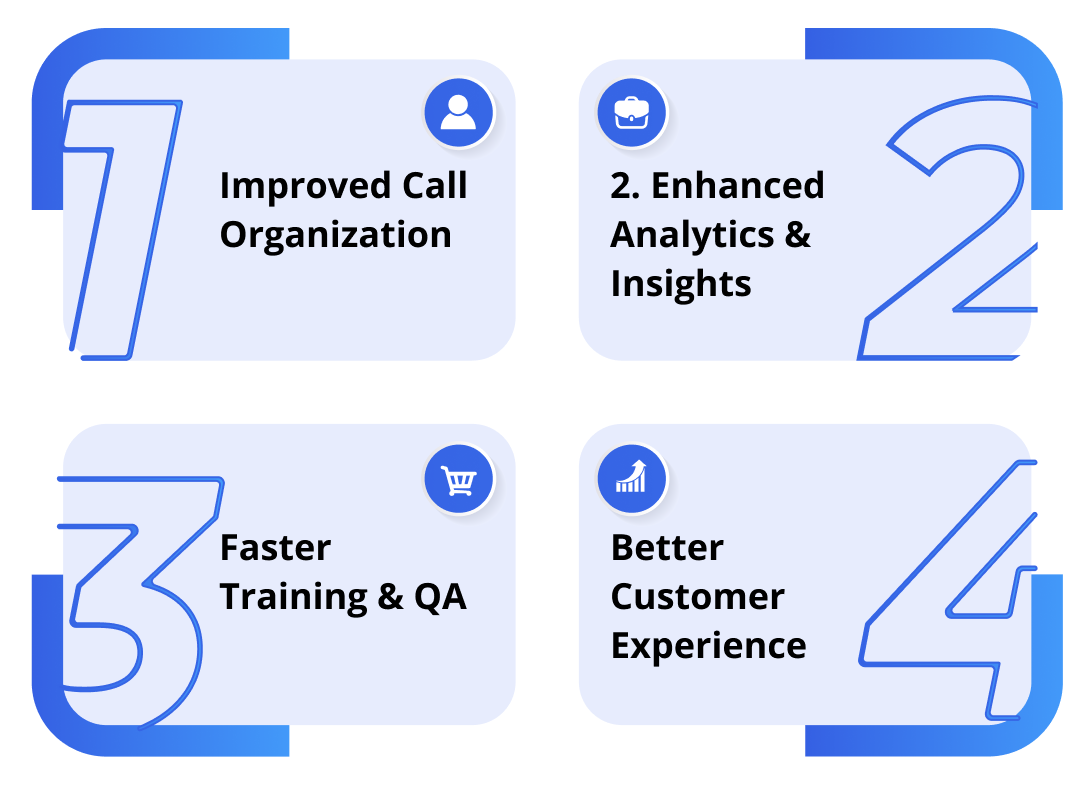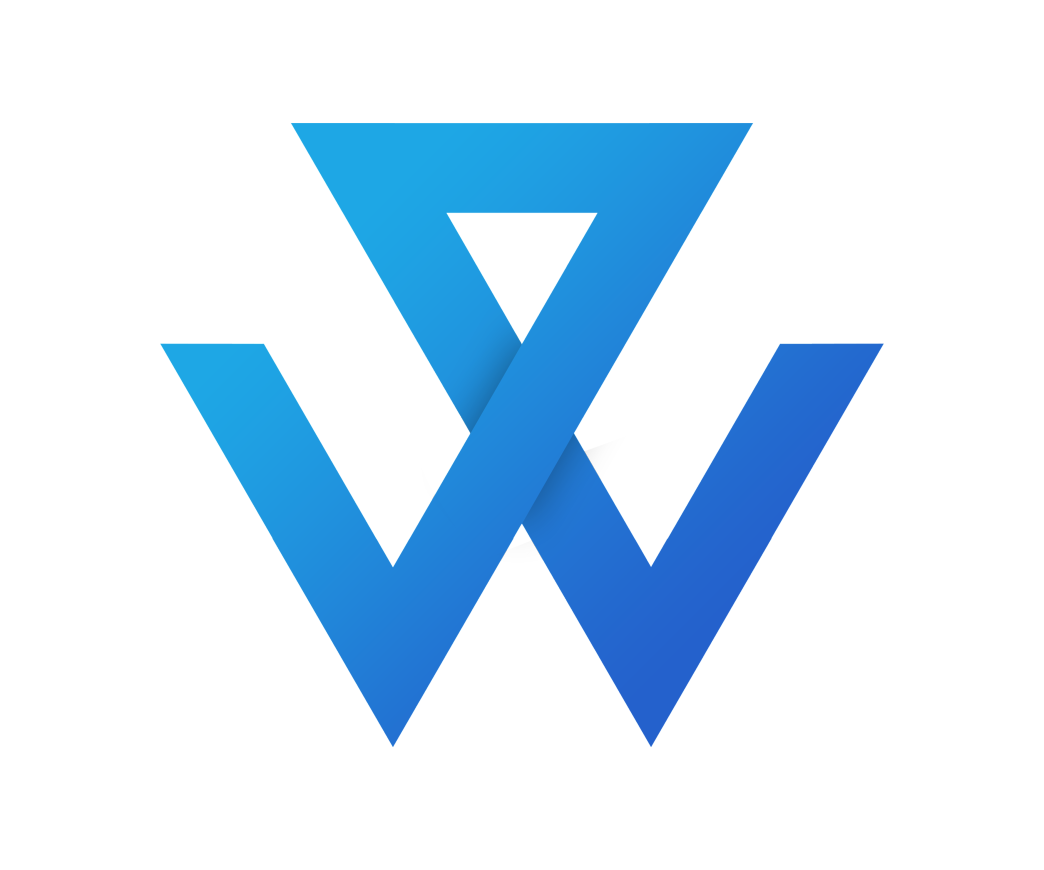Have you ever found yourself overwhelmed by the sheer volume of support calls, struggling to make sense of them all? If so, you’re not alone. As call volumes increase and customer expectations grow, support teams constantly seek innovative ways to stay organized and deliver fast, consistent service. This is where call tagging steps in, offering a sense of relief from the chaos of unorganized calls.
Statistics indicate that call tagging can improve the efficiency of call centers, enhance customer service, and enable better data analysis. For instance, a study found that 41% of organizations experienced a 25% or greater increase in phone conversion rates after implementing call tagging.
Call tagging is a simple yet powerful practice of labeling customer calls with keywords or categories that describe the topic, issue type, sentiment, or outcome. Call tagging is like giving your team a powerful tool to navigate your call history, empowering them to quickly find patterns, prioritize urgent issues, and improve their response efficiency.
Done right, call tagging unlocks a range of benefits:
- Faster ticket resolution and improved routing
- Smarter decisions through customer support data
- Cleaner call organization for performance reviews and audits
- More accurate call analytics to fuel process improvements
In this article, we’ll explore how call tagging works, why it’s essential for modern support teams, and what it can do for your overall support call management.
You’ll also see how ScaleSupport makes implementing call tagging effortless, with built-in automation, advanced reporting, and scalable workflows that fit seamlessly into your tech stack.
What is Call Tagging?
Call tagging is the process of labeling customer calls with specific keywords or categories describing each interaction’s nature. In the context of customer support, these tags help teams classify conversations by topic, issue type, sentiment, urgency, resolution status, and more. For example, after a call ends, an agent or system might apply tags like:
- “billing issue”
- “technical bug”
- “feature request”
- “cancellation risk”
- “positive feedback”
These quick identifiers help teams retrieve, analyze, and act on call data more effectively. Instead of digging through recordings or notes, managers can use tags to filter calls by type or trend, streamlining everything from QA for support teams to weekly performance reviews.
Manual vs. Automated Tagging
Traditionally, tagging has been a manual process, with agents selecting one or more tags at the end of a call. While effective, this process is prone to inconsistency and human error. More advanced systems now offer automated call tagging, liberating teams from the tedious task of manual tagging and allowing them to focus on more strategic tasks.
The Role of Tagging in Support Operations
Far from being just an admin task, call tagging plays a key role in larger support workflows:
- Improves ticket routing and escalation
- Enhances reporting and call analytics
- Informs product and service improvements
- Powers more intelligent contact center optimization
When integrated with your call center software, tagging becomes an operational asset, driving day-to-day clarity and strategic insight.
Key Benefits of Call Tagging

Call tagging isn’t just a nice-to-have for support teams handling dozens or thousands of calls each week. It’s a critical system for staying organized, uncovering insights, and delivering consistently high-quality customer service. Call tagging provides a strategic advantage for support managers, allowing them to identify trends, allocate resources effectively, and make data-driven decisions that improve the overall customer experience.
Without tagging, valuable call data often gets buried in transcripts, notes, or recordings that no one has time to review. Teams respond reactively rather than strategically — missing trends, repeating mistakes, and spending too much time hunting for answers that should be easy to surface.
Tagging transforms this chaos into clarity, giving managers and analysts a clear lens into what’s happening across the support floor. Below are four significant benefits of implementing a structured call tagging system.
1. Improved Call Organization
Finding specific call logs becomes time-consuming and frustrating without a system for organizing conversations. Call tagging brings structure to your database by labeling calls according to their content — whether it’s a billing issue, technical bug, or account update.
This allows agents and managers to:
- Instantly filter call history by topic or sentiment
- Review issue-specific conversations during team huddles or escalations
- Track frequency of specific call types (e.g., “refund request” or “outage report”)
In short, tagging turns chaotic call logs into a searchable, filterable system, making call organization faster and more effective.
2. Enhanced Analytics and Insights
Call tagging unlocks a goldmine of data when combined with reporting tools or call center software. Instead of just measuring call volume or average handle time, teams can analyze tagged data to:
- Identify recurring customer issues
- Pinpoint friction in product or service areas
- Track changes in sentiment or urgency over time
This makes call analytics actionable, not just observational. It also helps businesses make better decisions based on real-time customer support data.
3. Faster Training and QA
Tagging also improves QA for support teams by helping managers quickly spot coaching opportunities and behavioral patterns. For example:
- You can isolate all calls tagged “escalation” to identify where agents struggle
- You can evaluate how specific reps handle “feature request” conversations
This reduces the time spent searching for examples during quality assurance reviews and accelerates agent training with real-world scenarios.
4. Better Customer Experience
When calls are correctly tagged, follow-ups and resolutions become faster and more accurate. Agents reviewing previous cases can quickly see what the call was about, how it was handled, and what to do next, without listening to the entire recording. This saves the agent time and ensures that the customer’s issue is addressed promptly and accurately. This improves first-contact resolution rates, personalization in support interactions, and overall satisfaction across the customer journey.
In turn, this improves:
- First-contact resolution rates
- Personalization in support interactions
- Overall satisfaction across the customer journey
Ultimately, call tagging helps support teams move faster and smarter, creating a more seamless experience for agents and customers.
Common Use Cases by Support Teams
Support teams across industries use call tagging to bring structure and insight to every stage of the customer experience. When implemented effectively, tagging can support both frontline operations and strategic decision-making.
Below are some of the most common and impactful use cases, backed by real-world scenarios.
1. Escalation Tracking
Tags like “needs escalation” or “urgent complaint” help support leads identify calls escalated to higher-tier agents or management.
This enables:
- Faster resolution follow-ups
- Root cause analysis of recurring escalation types
- Pattern detection across product areas or customer segments
For instance, if a CX manager notices a spike in escalation tags tied to a specific region, they can proactively address local service issues.
2. Campaign or Product Feedback Tracking
When launching new features, pricing models, or marketing campaigns, support teams often field customer feedback first. Tags like “promo confusion”, “pricing concern”, or “feature feedback” help product and marketing teams gather insights directly from the front lines. This is invaluable for agile SaaS teams seeking quick iteration cycles.
3. QA Evaluations and Coaching
Supervisors use call tags to filter conversations for QA for support teams. For example:
- Reviewing all calls tagged as “unresolved” helps surface agent knowledge gaps
- Listening to “billing issue” calls provides real-world training material
By creating a categorized call library, quality reviews become faster and more focused.
4. Measuring Performance by Tag Category
With consistent call categorization, you can measure average resolution times or customer satisfaction scores by tag type. This reveals which issue types take longer to resolve and where additional resources may be needed.
5. Agent Performance and Accountability
Agents can also segment tag data. This allows support managers to see:
- Which reps handle the most “technical issue” calls
- Whose calls most frequently result in escalation or callbacks
These insights help with staffing, coaching, and performance recognition.
In short, call tagging transforms everyday support calls into a valuable data layer, supporting smarter, faster decision-making at every level.
Implementing Call Tagging in Your Workflow
You don’t need a complete system overhaul to effectively use call tagging, but an innovative, intentional approach. Successful implementation depends on having a clear tagging strategy, well-defined categories, and open communication across your team.
When done right, tagging becomes a natural extension of your support workflow, not an extra burden, and delivers real, measurable value across departments.
When to Tag: Live or Post-Call?
Tagging can occur during the call (live tagging) or after it ends (post-call tagging).
- Live tagging is proper when agents can quickly identify the call topic as it unfolds, especially for shorter or straightforward issues.
- Post-call tagging allows agents to reflect on the conversation and apply more accurate, multi-layered tags.
Many support teams use a hybrid approach: apply primary tags live, then fine-tune or add secondary tags after the call ends.
How to Choose Useful Tag Categories
Start with a small set of categories aligned with your most common call types. Functional tag groups often include:
- Issue type (e.g., billing, technical, account access)
- Sentiment or tone (e.g., frustrated, positive feedback)
- Outcome or action taken (e.g., escalated, resolved, follow-up needed)
Over time, you can expand categories based on call analytics data and your QA team’s feedback.
Creating Feedback Loops Between Teams
Tags are most valuable when shared across teams:
- Support uses them for routing and prioritization
- QA teams use them to review specific types of calls
- Product and marketing use them to gather customer feedback and trends
Establish regular syncs or dashboards where tag data informs cross-functional decisions.
Encouraging Agent Adoption
For tagging to stick, agents need:
- A simple interface (ideally integrated with your call center software)
- Clear documentation and examples
- Regular feedback loops showing how their tags drive impact
You can also gamify consistency by tracking correct tag usage and rewarding participation. When everyone tags the same way, you unlock the full power of support call management and customer support data.
ScaleSupport: Built-In Call Tagging & Smarter Analytics
While many tools claim to offer support features, few are explicitly designed with call tagging at the center of the workflow. That’s where ScaleSupport stands out — delivering an all-in-one solution for modern support teams who want clean call organization, more intelligent analytics, and better team performance.
Tagging That’s Built In — Not Bolted On
With ScaleSupport, there’s no need for third-party tagging tools or complex integrations. The platform includes native call tagging functionality, designed to fit naturally into your agents’ daily flow. During or after the call, tags can be applied in just a few clicks, without switching tabs or opening external forms.
Key features include:
- An intuitive tagging interface with searchable tag libraries
- Smart tag suggestions are powered by conversation context and agent behavior
- Real-time syncing so tags are instantly available for reporting and routing
- Bulk tagging options for high-volume teams needing faster workflows
This means less guesswork, manual entry, and fewer tagging errors — even across distributed support teams.
Reporting and Insights by Tag
ScaleSupport automatically aggregates tag-level data into easy-to-read dashboards. Managers can:
- View call volume trends by tag
- Identify top contact drivers over time
- Track agent performance across different tag categories
This empowers better call analytics, faster QA for support teams, and more intelligent staffing, product improvement, and training decisions.
Productivity and Consistency, at Scale
Tagging shouldn’t be an extra burden — and with ScaleSupport, it isn’t. By integrating tagging into the platform:
- Agents spend less time on post-call admin
- Team leads spend less time chasing data
- Executives get faster access to customer support data that drives strategy
It also ensures consistency across your entire support operation — a key requirement for accurate support automation and long-term contact center optimization.
In short, ScaleSupport makes call tagging seamless, accurate, and deeply actionable. No bolt-ons. No data silos. Just smart, scalable support infrastructure.
Conclusion
As customer expectations rise and call volumes grow, the ability to organize and analyze support conversations isn’t optional; it’s essential. Important insights are buried, patterns go unnoticed, and teams waste valuable time searching through disorganized call logs without structure.
That’s where call tagging proves its value. With the right system, support teams can make faster decisions, deliver quicker resolutions, and surface data that drives change, from product improvements to better training and team performance. If your current setup makes it hard to pull insights from calls or spot recurring issues, it may be time to rethink how you’re managing support data.
ScaleSupport was built to make this process easier. From intuitive tagging tools to real-time reporting, it gives your team everything they need to tag smarter, move faster, and stay organized — all in one place.
Whether you’re scaling a team or tightening your workflows, it’s worth exploring ScaleSupport’s services and seeing how built-in call tagging can improve your operations. Or, if you’re ready to talk specifics, schedule a free consultation with our team to see how we can support your goals. Your next level of support starts with better tagging. And that begins here.

Dianne has extensive experience as a Content Writer, she creates engaging content that captivates readers and ranks well online. She stays on top of industry trends to keep her work fresh and impactful. She has a talent for turning complex ideas into relatable stories. When she’s not writing, you’ll probably find her with a crochet hook in hand or working on a fun craft project. She loves bringing creativity to life, whether it’s through words or handmade creations.






